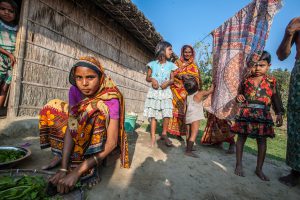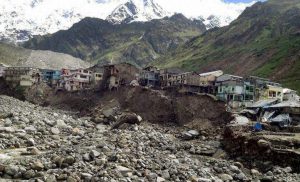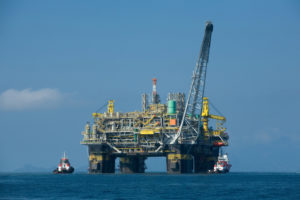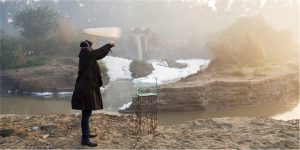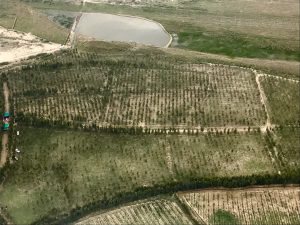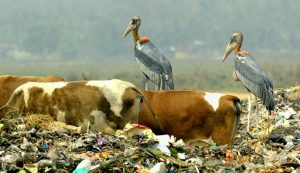The Bangladesh-India relationship is complex in nature, but one issue has dominated it: politics over the Ganga. The Ganga water sharing issue goes back to 1951, when Bangladesh was still part of Pakistan and India planned to build a barrage at Farakka, 18 kilometres upstream from the border to preserve the Kolkata port by improving the regime and navigability of the Hooghly River.
Although India signed the Indus Waters Treaty with Pakistan on its western rivers in 1960, a year later it unilaterally decided to start the construction of the Farakka Barrage on the Ganga on its east. The barrage became operational in 1975 and since then India has been diverting water from the Ganga mainstream to the Hooghly, though most of the Kolkata port’s bulk cargo operations have shifted to Haldia port downstream.
See: Farakka barrage, engineers and hydropolitics
India and Bangladesh had four short-term water sharing arrangements from 1975 to 1988, but could not reach any understanding from 1988 to 1996. In that period, Farakka became a serious bilateral dispute and Bangladesh raised this issue in various international fora.
The Ganga Water Treaty
After changes of government in both countries Bangladesh and India signed a 30-year agreement to share the waters of the Ganga in December 1996. But due to increasing upstream withdrawal, in 1996 the water availability at Farakka in the dry-season period had gone down from what was available in 1975, when they had signed the first agreement. To get a politically acceptable water share, both countries based their 1996 agreement on the flow average of 1949 to 1988, but the real flow at Farakka in the 1990s was much lower than that.
The signing of the Ganga Water Treaty has helped to improve the overall bilateral relations between the two countries. They have come together on the issues of trade and transit, anti-terror measures and also signed a land boundary agreement.
See: “Even states in the same country fight over a river”
But the Ganga Water agreement has not brought any significant change to the water availability for south-western Bangladesh.
From 1993 to 1996, I conducted an extensive study of the Ganga (known as the Padma in Bangladesh) basin to measure the adverse environmental impacts of India’s water diversion at Farakka.
There was no doubt the Farakka Barrage had affected agricultural and industrial production, disrupted domestic water supply, fishing and navigation, and changed the hydraulic character of the rivers and ecology of the delta in the downstream areas.
As per the calculation by the Government of Bangladesh, the total loss the country had incurred from 1976 to 1993 was nearly USD 3 billion. Besides the financial loss, my field study also showed that the environment destruction caused by Farakka diversion had displaced a large number of people in Khulna and Jessore regions of Bangladesh.
The environmental devastation of the Farakka Barrage on Bangladesh has not reduced much even after the signing of the treaty in 1996, as there is not much water available in the Ganga in the dry season for Bangladesh. Farakka continues to be a nightmare for the large number of poor people in southwestern Bangladesh and its ecology, though it is no longer an issue of bilateral contention.
The decreased freshwater flow in the dry season due to Farakka diversion has also increased water salinity in the Bangladeshi part of Sundarbans, resulting in the dying of ecologically critical mangrove forests.
See: Farakka barrage leads to water crisis in Bangladesh
The migration effect
While in Bangladesh in 1993, I came across a press report that due to dying of mangroves, honeybees were migrating from the Bangladeshi part to the Indian part of the Sundarbans. If honeybees could migrate across the border, what would stop the people who lose their livelihood in Bangladesh to seek alternative sources of survival in the Indian side?
Investigating this question, I found that the failure of the ecosystem which supports the rural economy in the regions affected by the Farakka Barrage has forced many villagers to migrate to nearby urban areas. But the migration was not limited to within Bangladesh. A large number of people from the region crossed the porous border and migrated to India. From 1993 to 1995, I interviewed 53 Bangladeshi migrants in Assam and West Bengal and 43 of them traced their origin to Farakka affected regions. The reason they gave for leaving their homes was agricultural loss, depleting fish catch and river bank erosion. I also interviewed 90 people on the Bangladesh side, who substantiated their countrymen’s claim.
Although Bangladesh officially refuses to accept any human migration to India, its own census reports prove otherwise. The sharp drop in the population increase in the Khulna region compared to other regions of Bangladesh since the late 1970s and analysis of other demographic trends gave us enough reason to estimate that the Farakka Barrage till 1995 had been responsible for displacement of two million Bangladeshis from their villages who had crossed the border to India in search of livelihood.
Even after the signing of the Ganga Water Treaty, the Farakka Barrage continues to create environmental problems on the Bangladeshi side and that does not help to stop the population displacement and subsequent migration to India.
In his chapter called “Environmental Refugees and Environmental Distress Migration as a Security Challenge for India and Bangladesh”, in the 2009 book Facing Global Environmental Change: environmental, human, energy, food, health and water security concepts, noted international relations scholar Imtiaz Ahmed – then in Dhaka University – showed large-scale population migration from Khulna region due to environmental insecurity. On the Indian side, the population growth in border districts was also much higher compared to other districts until the 2001 census. Though this growth rate has stabilised to some extent in the 2011 census and population growth in the Farakka affected area of Bangladeshi side is not declining that fast, the migration to India from Bangladesh is continuing.
Since many of the migrants are Muslims moving to a Hindu-majority country, this migration has led to a number of communal conflicts in India. Assam, which received a large proportion of these migrants, was the first to experience this conflict. It has now spread to West Bengal and to other parts of India. In West Bengal, Hindu and Muslim migrants from Bangladesh are also up in arms against each other. The Bharatiya Janata Party regularly uses the Muslim migration issue for political purposes.
Now Nitish Kumar, Bihar’s Chief Minister, has also come out against the Farakka Barrage, blaming it for the recurring floods in the state.
See: Natural floods and unnatural disasters in Bihar
As Sheikh Hasina, the Prime Minister of Bangladesh, arrives in India and is hoping for an agreement on constructing another barrage inside Bangladesh, both countries need to take a pause and look at the overall balance sheet of the Farakka Barrage first.
![<p>The Ganga has silted up, this is the situation near Farakka [image by Arati-Kumar Rao]</p>](https://dialogue.earth/content/uploads/2017/04/Ganga_siltation_Farakka_Image_By_Arati_Kumar_Rao.jpg)

